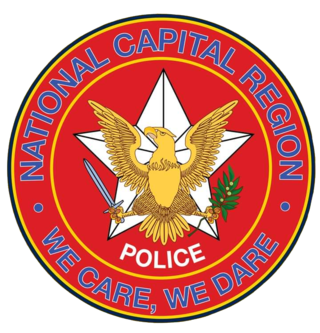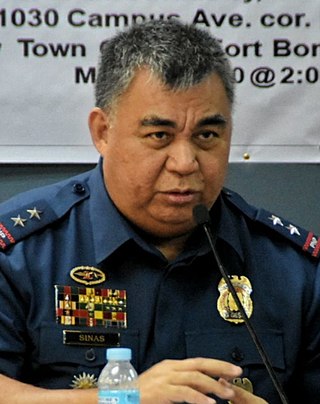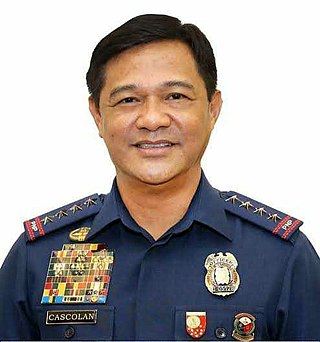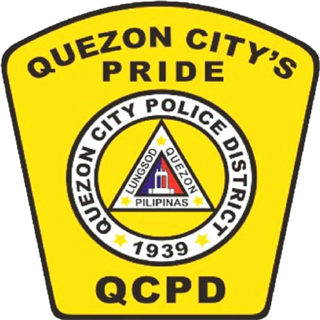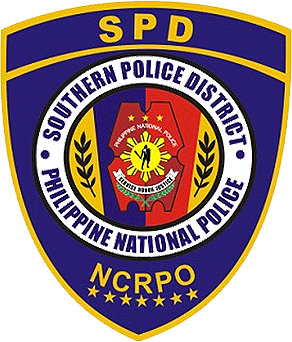| Name | Term | Notes |
|---|
| From establishment to Commonwealth |
| Gen. Arthur MacArthur Jr. | January 9 – July 31, 1901 | [2] |
| Capt. George Curry | July 31, 1901 – 1902 | [2] |
| Mathew Harmon | 1901 - 1903 |
Capt. John E. Harvin
| 1903 – July 1910 | [2] |
| John Fulton Green (acting) | July 1910 – 1911 | Acting [2] |
| John E. Harding | 1911–1913 |
| Capt. George H. Seaver | December 1, 1913 – June 16, 1918 | [2] |
| Capt. Anton Hollmann | June 16, 1918 – January 9, 1920 | [2] |
| Capt. Edwin C. Bopp | January 9, 1920 – March 20, 1922 | [2] |
| Lt. Col. Gregorio M. Alcid (acting) | 1921–1922 | Acting [2] |
| Col. John William Green, III | March 20, 1922 – March 2, 1929 | [2] |
| Lt. Col. Gregorio M. Alcid (acting) | 1929 – 1930 | Acting [2] |
| Col. Columbus E. Piatt | 1930 – March 1, 1936 | [2] |
| From Commonwealth to Western Police District |
| Col. Antonio C. Torres | March 1, 1936 – January 1945 | [2] |
| Col. Juan F. Dominguez | 1939 – 1940 | Acting [2] |
| COL. Manuel S. Turingan SR. | 1940 - 1945 |
| Marcus Ellis Jones | February 7, 1945 |
| Col. Jeremiah P. Holland | May 1, 1945 – March 1946 | [2] |
| Col. Angel M. Tuason | March – July 3, 1946 | [2] |
| Col. Lamberto T. Javalera | July 12, 1946 – May 1947 | [2] |
| Col. Manuel dela Fuente | May 1947 – January 1948 | [2] |
| Col. Eduardo Quintos | January 12, 1948 – December 1 or 3, 1951 | First term [2] [14] |
| Col. Dionisio Ojeda | January 1952 – April 1953 | [2] |
| Col. Cesar V. Lucero | April 10, 1953 - January 5, 1954 | [2] |
| Col. Telesforo Tenorio | January 5, 1954 – May 10, 1962 | [2] |
| Col. Napoleon D. Valeriano | October 27 – November 21, 1954 | [2] |
| Gen. Marcos G. Soliman | May 10 – September 17, 1962 | [2] |
| Brig. Gen. Eduardo Quintos | September 17, 1962 – April 7, 1965 | First chief to serve for the second term [2] [14] |
| Gen. Eugenio C. Torres | April 8, 1965 - May 24, 1966 | [2] |
| Gen. Ricardo G. Papa | March 26, 1966 - March 13, 1968 | [2] |
| Gen. Enrique V. Morales | March 14 – November 30, 1968 | [2] |
| Gen. Gerardo G. Tamayo | November 30, 1968 - September 16, 1974 | [2] |
| As chief of the Western Police District |
| Gen. James G. Barbers | September 17 – December 20, 1974 | Acting [2] |
| December 20, 1974 – August 7, 1979 | As superintendent [2] |
| Gen. Pedro F. de la Paz | August 8, 1979 – January 1, 1981 | [2] |
| Gen. Narciso M. Cabrera | January 2, 1981 – May 1, 1986 | [2] |
| P/Brig. Gen. Alfredo S. Lim | May 2, 1986 – December 21, 1989 | [2] |
| Col. Hector M. Ciria Cruz | Sometime in the 1970s to late 1980s | Became Chief of Police (WPD), a close friend with Alfredo Lim |
| GEN. Ernesto Diokno | December 22, 1989 - August 7, 1992 |
| P/CSUPT Oscar Aquino | August 7, 1992 - September 7, 1992 |
| BRIG. GEN. Proceso D. Almando | September 7, 1992 - December 8, 1992 |
| P/CSUPT Romeo O. Odi | December 8, 1992 - November 5, 1991 |
| P/CSUPT Hermogenes Ebdane, Jr. | November 5, 1993 - June 16, 1996 |
| P/CSupt. Avelino Razon Jr. | June 11, 1996 – August 3, 1998 | First term [14] |
| P/SSUPT Virtus Gil | August 3, 1998 - December 14, 1998 | |
| P/CSUPT Efren Fernandez | December 16, 1998 - December 20, 1999 | Concurrently serving as the OIC Director of NCRPO |
| P/CSupt. Avelino Razon Jr. | December 20, 1999 – March 15, 2001 | Second chief to serve for the second term [14] |
| P/CSUPT Nicolas Pasinos JR | March 15, 2001 - July 29, 2002 |
| P/CSUPT Pedro Bulaong | July 31, 2002 - August 1, 2006 |
| As chief of the Manila Police District |
| P/SSUPT. Danilo Abarzosa | July 25, 2006 - September 24, 2007 |
| PCSUPT Roberto Rosales | September 24, 2007 - April 1, 2009 |
| PCSUPT Rodolfo Magtibay | April 1, 2009 - August 25, 2010 |
| PSSUP Francisco Villaroman (OIC) | August 25, 2010 |
| PCSUPT Leocadio Santiago, Jr. | August 27, 2010 |
| PCSUPT Roberto P Rongavilla | August 28, 2010 - October 19, 2011 |
| PCSUPT Alejandro Gutierrez | October 20, 2011 - April 5, 2013 |
| PSSUPT Robert Po (OIC) | April 5, 2013 - July 1, 2013 |
| PCSUPT Isagani Genabe, Jr. | July 1, 2013 - January 26, 2014 |
| PCSUPT Rolando E Asuncion | February 27, 2014 - October 8, 2014 |
| PCSUPT Rolando Z. Nana | October 8, 2014 - June 30, 2016 |
| PBGen Joel N Coronel | July 1, 2016 - May 31, 2018 |
| PBGEN Rolando B. Anduyan | July 1, 2018 - November 7, 2018 |
| Police BGen. Vicente Danao | November 18, 2018 - October 19, 2019 | Reassigned and promoted as regional director, PRO4A. |
| Police BGen. Bernabe M. Balba | October 20, 2019 - March 19, 2020 | Reassigned and promoted as regional director, PRO8. |
| Police BGen. Rolando F. Miranda | March 19, 2020 - December 1, 2020 | Reassigned and promoted as regional director, PRO6. |
| Police BGen. Leo M. Francisco | December 1, 2020 - August 8, 2022 | Reassigned and promoted as regional director, PRO6. |
| Police BGen. Andre P. Dizon | August 8, 2022 – October 16, 2023 |
| Police BGen. Arnold Thomas C Ibay | October 17, 2023 – present |













